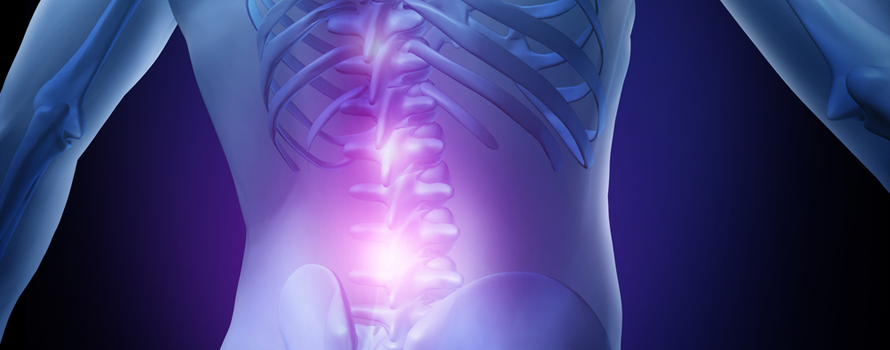What is Ankylosing Spondylitis?
Ankylosing spondylitis (AS) is a painful chronic inflammatory disorder that affecting the spine and leading to severe stiffness of the back. As the inflammation continues and healing takes place, bones grow from both sides of the spine causing the bones to fuse together, which can lead to stiffening of the spine.
What happens in ankylosing spondylitis?
Ankylosing spondylitis is an autoimmune disease, which means the body’s immune cells create special proteins called antibodies that attack the joints. The joints that are usually affected are those between the bones of your spine (vertebrae) and those in your spine and pelvis, called the sacroiliac joints. As the disease progresses, it can cause chronic pain and reduce the ability for the individual to move.
What causes of ankylosing spondylitis?
We don’t know what causes of ankylosing spondylitis. It is thought to be related to colitis (inflammation of the colon) or psoriasis, a skin disease. AS belongs to the autoimmune family of diseases. The term ‘autoimmune’ means that the body attacks itself. This is a reverse of what the immune system usually does, which is to defend the body against attack such as infection. The immune system inflicts damage on various body tissues. What triggers this is still not understood.
Genetics also plays a part, and having certain genes may predispose you to developing ankylosing spondylitis. A gene called HLA-B27 occurs in over 90% of patients suffering from ankylosing spondylitis. However, not every person possessing this gene will develop the condition.
AS typically affects more woman than men (2:1) and is frequently seen in younger people (late teens, early 20s).
What are the symptoms?
Pain and stiffness in the lower back may be a sign of AS. You may feel pain after exertion and strain in the buttocks and the lower part of your back. Aches and pains in the neck, shoulders and hips, or in the thigh may also occur. Children may complain of hip pain or a swollen knee.
AS may cause the back to stiffen. In some people, the condition subsides, causing no further problems. The stiff back may be painless and may not interfere with physical activity, because the upper part of the spine is still mobile. However, in some people, the disease is more active, causing pain and stiffness.
AS can also affect other joints in the body (e.g. hips, knees, ankles and shoulders) causing swelling and decreasing movement. The heel bone may be affected, making it uncomfortable to stand. Some patients may even experience chest pain. Iritis (inflammation of the eye) is another possible symptom. In rare instances (less than one patient in 100), the condition can affect the heart, lung and nervous system.
How is ankylosing spondylitis diagnosed?
Your doctor will make his/her diagnosis by listening to your symptoms and by examining you. There is no specific test for AS. The doctor may ask whether you have had pain, back stiffness or back ache for several months. He/she may ask whether you have pain/stiffness in the morning that subsides with time, and whether your pain decreases when you exercise.
After a physical examination, your GP may arrange for a diagnostic test. This test is a white blood cell test, which checks for a specific genetic marker. This marker, HLA-B27, is more common in individuals with ankylosing spondylitis (AS) than the general population. However, it does not necessarily mean a person has AS. X-rays of the back will also show where joint damage has occurred.
After a confirmed diagnosis, assessment tests may be used to measure the progress of the condition.
How is ankylosing spondylitis treated?
Ankylosing spondylitis affects people differently. With this condition, like other types of arthritis, it is advisable to keep fit and get plenty of exercise. Treatment for AS usually combines medication with exercise (e.g. swimming) or physiotherapy. Exercises that help maintain flexibility and improve posture are recommended. It is also advisable to maintain a suitable weight for your height and eat healthily. Heat packs will often help to relieve pain and stiffness.
Although no cure is currently available, a number of medication options are available to treat AS. Non-prescription analgesics (e.g. paracetamol) can be used to relieve pain, and other medications are use to treat inflammation.
NSAIDs
Non-steroidal anti-inflammatory drugs (NSAIDs) are used frequently to relieve pain and stiffness.
DMARDs
A group of medications called disease-modifying anti-rheumatic drugs are used to treat individuals with severe AS e.g. sulfasalazine and methotrexate.
Biologic drugs
Biologic drugs are the most recently developed group of medications for people with autoimmune diseases including arthritis and AS. They are generally used in people with severe disease. They work in the body to decrease the inflammation, and relieve pain while fighting the disease.
Surgery is rarely used in treatment but it is important in restoring movement to a damaged hip joint (e.g. hip replacement).
For further information, contact the Ankylosing Spondylitis Association of Ireland (www.ankylosing-spondylitis.ie), Carmichael House, North Brunswick St, Dublin 1, phone: (01) 8316678 or (01) 8376614.




